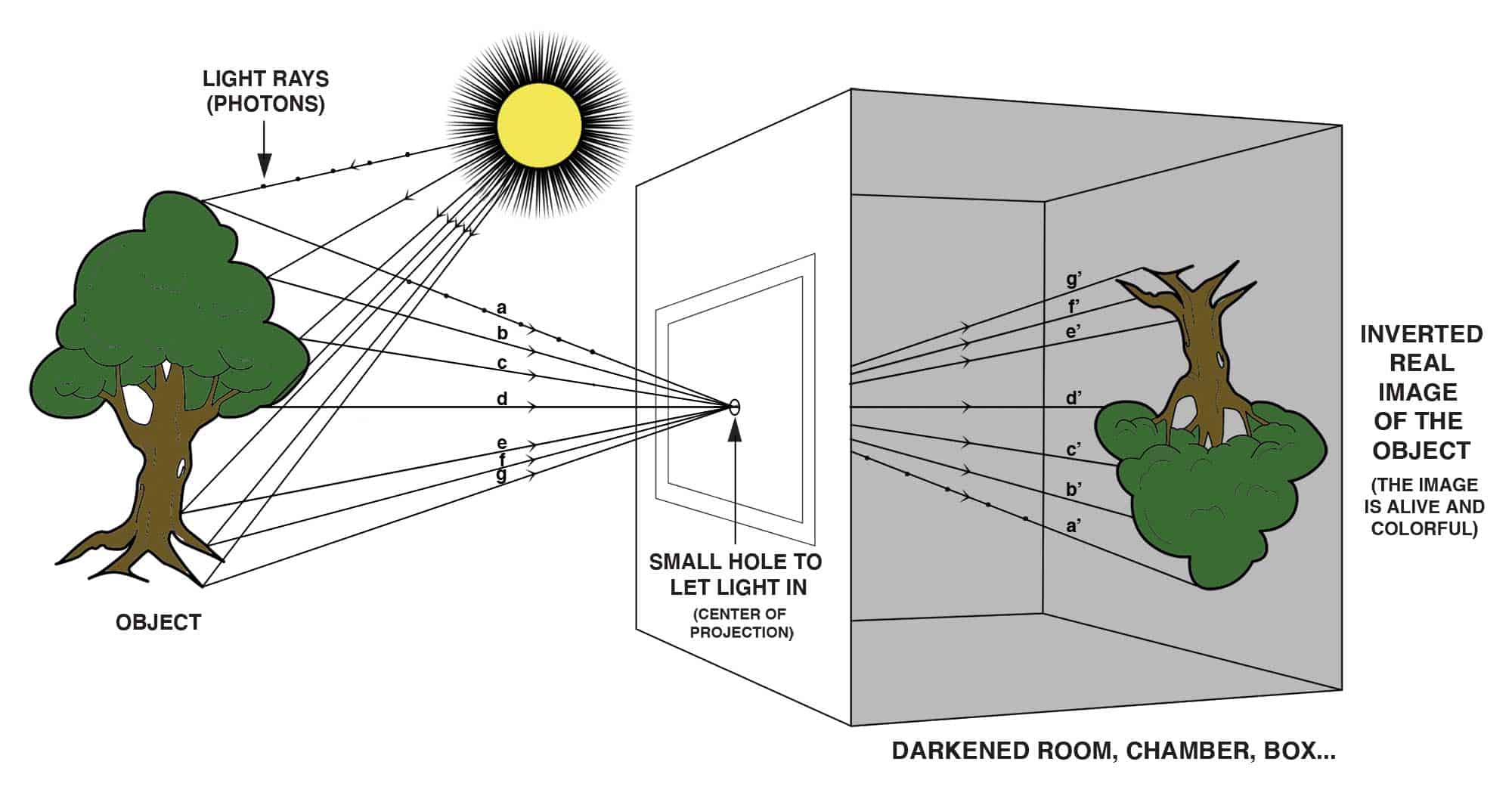
ADVERTISEMENT - CONTINUE READING BELOW
Camera Obscura’s Glorious Debut
There is a reason Leonardo da Vinci is lauded as one of the world’s greatest minds. The foundation of all of this work on camera obscura fueled da Vinci’s work in the Codex Atlanticus (1502). This was the first published and clear description of the theory. He published this along with many of his other famous inventions and illustrations. Over the years, Da Vinci drew around 270 diagrams of camera obscura devices in his sketchbooks.
With the buzz surrounding camera obscura through the centuries, many historians have speculated on who took advantage of some of the methods. Many art historians pose that Johannes Vermeer, the famous Dutch Baroque period painter, utilized this in some of his work. The theory is based on studies of the artworks themselves. Beneath the surface of his paintings, there are no signs that he made any corrections to his layouts as he worked. Instead, Vermeer created a shadowy image outlining the scene before painting, perhaps based on a projected image. Of course, this in no way would diminish his clear artistic prowess. But it’s interesting to see this theory brought into the art history sphere.

